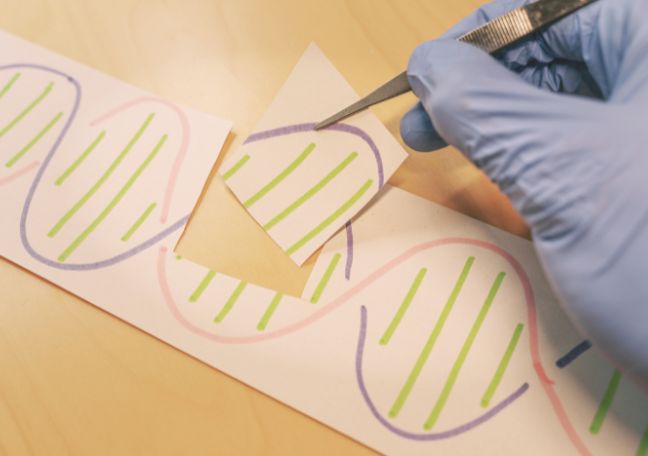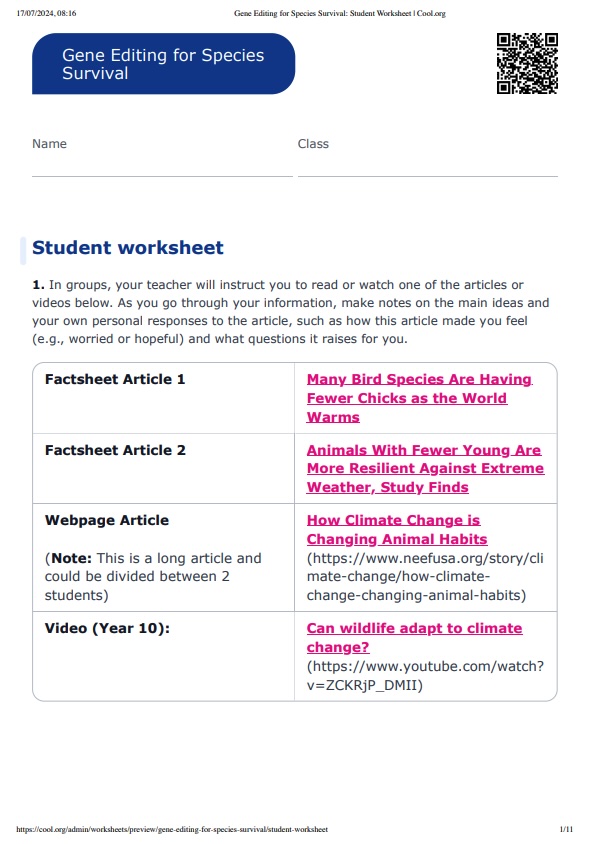Lesson summary
Students will explore the roles of gene editing and reproductive technologies as one strategy for the survival of plants and animals in the face of threats like climate change. Students will look at a number of ways gene editing is used to help species before looking at how these strategies can be part of a bigger conservation picture and making a conservation plan for a species in their area.
Learning intentions:
Students will...
- recognise that climate change is a threat to biodiversity
- understand that gene editing and assisted reproductive technologies can play a role in species survival.
Success criteria:
Students can...
- discuss the potential opportunities and risks (including ethical questions) associated with gene editing
- create a fact sheet to show how gene editing and assisted reproductive technologies can play a role in the conservation of a local species.
Lesson guides and printables
Curriculum links
Select your curriculum from the options below.
Lesson details
Skills
This lesson is designed to build students’ competencies in the following skills:
- creative thinking
- critical thinking
- communication
- ethical understanding
Curriculum Mapping
Australian Curriculum (v9.0) content description:
Year 9 & 10, Science
- describe the form and function of reproductive cells and organs in animals and plants, and analyse how the processes of sexual and asexual reproduction enable survival of the species (AC9S9U02)
- use the theory of evolution by natural selection to explain past and present diversity and analyse the scientific evidence supporting the theory (AC9S10U02)
Relevant parts of Year 9 & 10 achievement standards: Students can describe how the processes of sexual and asexual reproduction enable the survival of the species. Students explain the processes that underpin heredity and genetic diversity and describe the evidence supporting the theory of evolution by natural selection.
NSW Syllabus outcomes:
- explains how DNA is responsible for the transmission of heritable characteristics and can be manipulated through genetic technologies (SC5-GEV-02)
General capabilities: Critical and Creative Thinking, Ethical Understanding
Cross-curriculum priority: Sustainability
Level of teacher scaffolding: Medium - oversee class and group discussions and leads students in independent tasks.
UN Sustainable Development Goals
- Target 15.5: Take urgent and significant action to reduce the degradation of natural habitats, halt the loss of biodiversity and, by 2020, protect and prevent the extinction of threatened species.
Resources Required
- Device capable of sharing a YouTube video
- Paper and pens/pencils
- Student devices with internet access
- Student workbooks.
Additional Info
This is an original Cool.org lesson.
Related Professional Learning
How To Teach Sustainability With Hope - Primary and Secondary
Quick Summary: This course is designed for teachers of all subjects to discover how to bring hope to challenging, upsetting or worrying topics around sustainability.



Welcome back!
Don't have an account yet?
Log in with:
Create your free Cool.org account.
Many of our resources are free, with an option to upgrade to Cool+ for premium content.
Already have an account?
Sign up with:
By signing up you accept Cool.org's Terms and Conditions(Opens in new tab) and Privacy Policy(Opens in new tab).